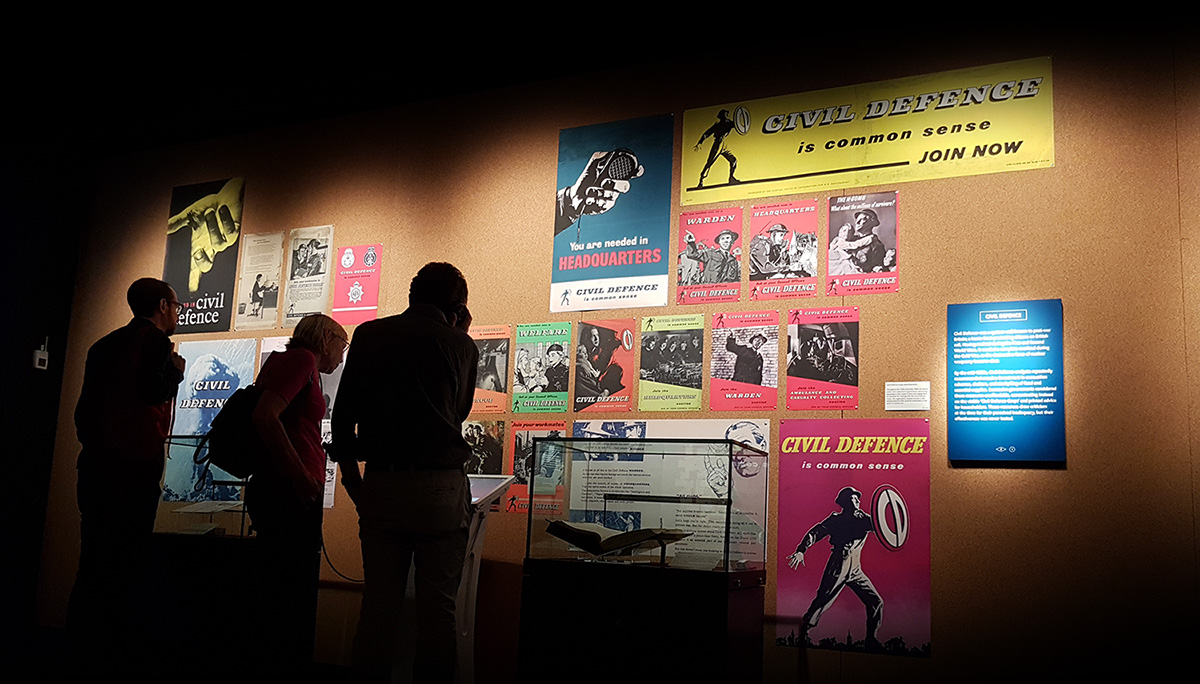This week, I had the opportunity to visit the Britain’s Cold War Revealed exhibition at the National Archives at Kew.
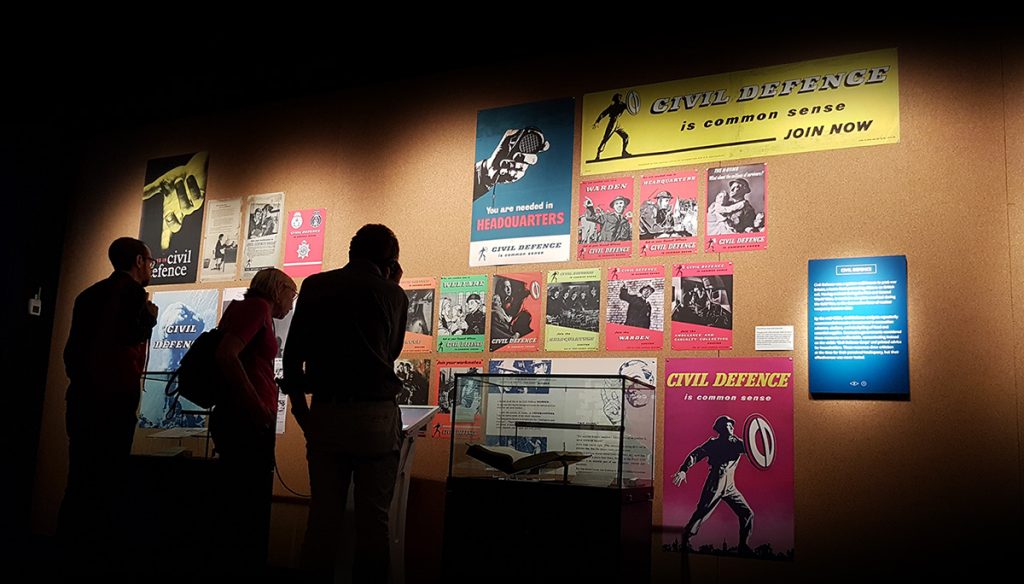
I was impressed at how it manages to explore a wide range of themes in such a small exhibition space.
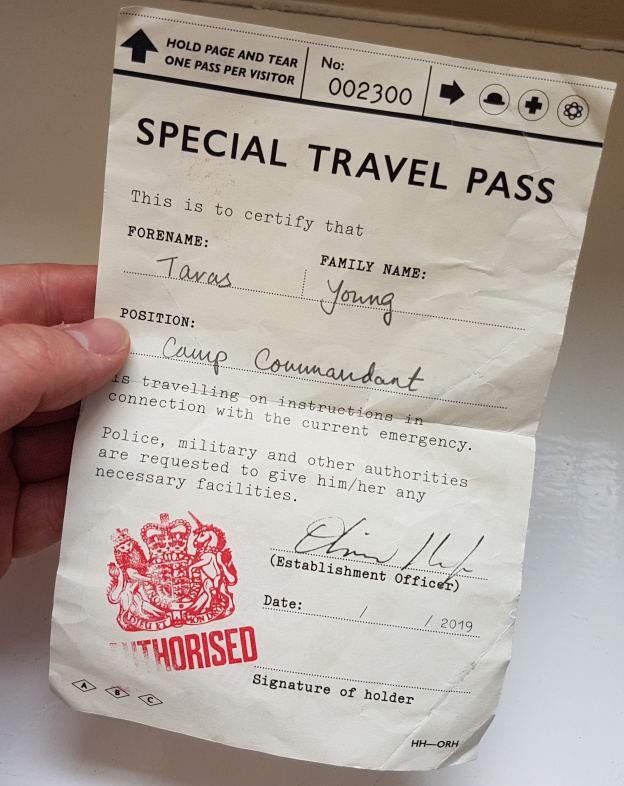
The exterior is styled like the entrance to a bunker, and you’re encouraged to sign in by taking an official-looking name badge. You can even choose your role in the bunker – including Camp Commandant (obviously the best choice, as you get to be in charge) and Scientific Officer. There are a few more activities along this theme once you get inside the exhibition proper, which I imagine are intended for kids. Fortunately, nobody stopped me from participating, and I walked away with my very own officially-stamped travel pass.
As I mentioned, the exhibition space is quite small (and the topic is rather big). I chatted with the curator, Mark Dunton, who suggested the space may be expanded for future exhibitions. However, they’ve managed to make good use of the space they have, and there’s plenty to see, including original documents from the archives, cultural artefacts and some interactive exhibits.
National security
The displays in the first exhibition space broadly cover topics of national security. These include the Cambridge Spy Ring, the development of nuclear weapons, and nuclear bunkers (including Royal Observer Corps posts and Regional Seats of Government). Extracts from the BBC’s 1980 Panorama documentary If the Bomb Drops… play on one wall, and a red telephone in the middle of the room occasionally rings ominously. There’s also an original copy of the Strath Report from 1955, whose grim predictions of life after a limited nuclear exchange inspired the UK government’s flurry of bunker-building and other civil defence activity in the early 1960s.
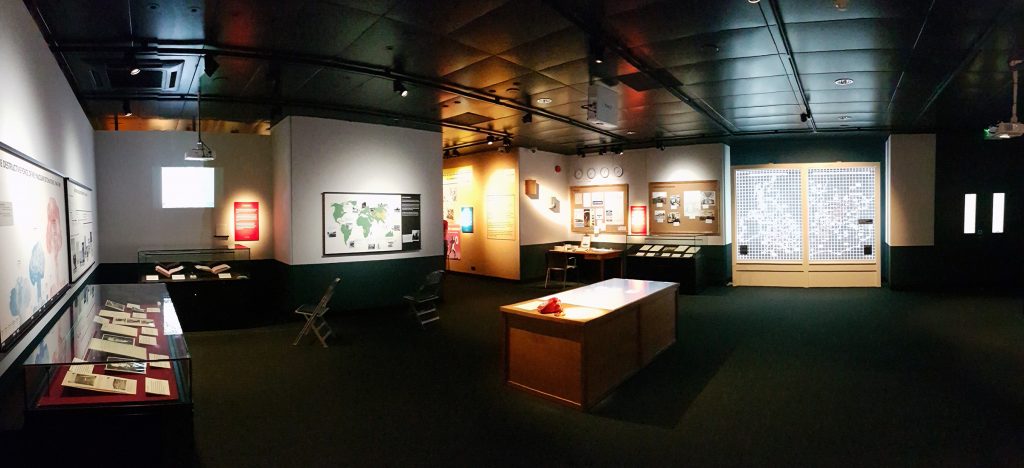
Home front
The second space focuses more on the effects on ordinary British people. One wall is plastered with posters advertising roles in the Civil Defence Corps, and an interactive exhibit plays instructional videos from the infamous 1980s Protect and Survive series, with useful commentary from Civil Defence historian Matthew Grant.
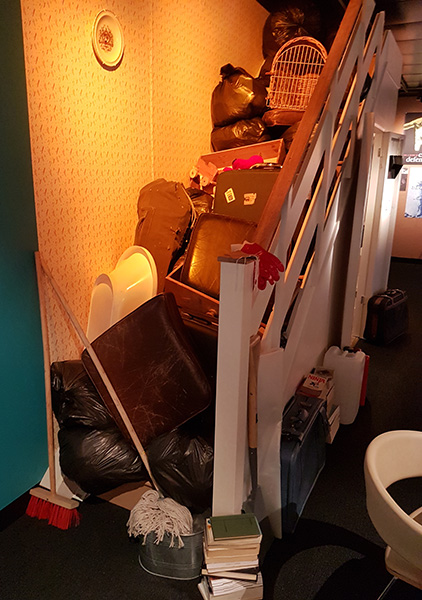
The main feature of this room is a recreation of an improvised fallout shelter under the stairs, well-stocked with authentic 1980s supplies inside. The shelter has been built to be tall enough for an adult to stand up in comfortably. The stairs themselves (pictured) are covered with luggage and possessions. A transistor radio plays a specially-recorded radio announcement of imminent nuclear attack. They’ve made this faithful to the period by having it read out by former BBC World Service journalist Sir John Tusa. There’s also various other aspects of 1980s culture represented, such as nuclear-influenced records, and a case of protest movement artefacts.
Finally, there is a small cinema space showing a specially-produced video on various aspects of Britain’s Cold War.
Apolitical?
In all, I was very impressed with the exhibition. My only criticisms are that, for such a charged topic, it’s rather apolitical (which is only natural I suppose, given the venue) – figures like Margaret Thatcher are notable by their absence. At the same time, some of the choices made by the curators reveal their biases and those of the National Archives.
I would also have liked to have seen a recreation of the more ramshackle ‘lean-to’ shelter described in Protect and Survive, which would have given a better picture of the utterly claustrophobic conditions families would have endured, had the worst happened. The under-the-stairs shelter – which, to be fair, was also an option presented in the government pamphlet – is probably more acceptable from an exhibition health and safety point of view. But I wonder if this relatively spacious, nostalgically-stocked and stable-looking shelter detracts from the horrible reality many would have experienced in a nuclear attack on Britain.
It is clear that the exhibition has been put together with a great deal of care by people who have thoroughly researched the subject. The exhibition runs until 9th November 2019, and it’s free, so – if you’re reading this in April – there’s still plenty of time to see it for yourself. There’s also an accompanying season of events, including talks on the Cold War’s cultural impact, and even one on UFOs. I would highly recommend going along if you can.
Looking for more?
My book, Nuclear War in the UK (Four Corners Books, 2019) is packed with images of British public information campaigns, restricted documents, propaganda and protest spanning the length of the Cold War.
It also tells the story of how successive UK governments tried to explain the threat of nuclear attack to the public. It costs just £10 – find out more here.

